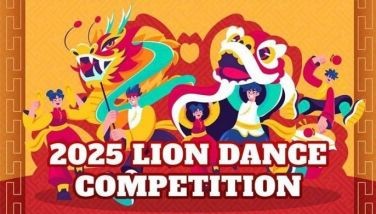Going global
Before anything else, let me announce and congratulate the fellows to this year’s UP National Writers Workshop, to be held April 10 to 17 in Baguio City. The workshop is run by the University of the Philippines Institute of Creative Writing, and for the past many years, we’ve focused on the development of mid-career writers people who have already published at least one book, with proven talent and dedication to their craft. Over a week, we talk about their works in progress, and strengthen their resolve to press on.
This April, we’ll be joined by the following young writers: (Filipino) Khavn dela Cruz, German Gervacio, Axel Pinpin, John Torres, John Iremil Teodoro, and Genevieve Asenjo; (English) Ronald Baytan, Nerisa Guevara, Clarissa Militante, Jennifer Ortuoste, Alan Pastrana, and Yvette Tan.
Congratulations and an advance welcome to all of you!
* * *
Here’s more happy news for Filipino authors. Later this year, on Oct. 1 and 2, a Filipino-American Book Fair will be held at the San Francisco Public Library under the auspices of the Literacy Initiatives International Foundation (LIIF) to showcase the works of contemporary Filipino and Filipino-American authors. I’ll be there to promote the publication of my two novels Killing Time in a Warm Place and Soledad’s Sister in a single-volume edition titled In Flight: Two Novels of the Philippines, by the small but highly respected Schaffner Press. Members of the Book Development Association of the Philippines (BDAP) will be attending to help raise the global profile of Philippine writing and publishing.
But other, younger Filipino authors can go there, too and unlike me, they won’t be paying their own way. Thanks to a grant from the LIIF through the Asia Foundation, six Filipino writers between 20 and 40 years old may qualify for free airfare and accommodations if they (1) have already published a book; (2) already have a US visa or can get one; (3) and can do an interesting presentation. According to the BDAP, the applicant’s book and prospective presentation will have to fall under any of the following preferred categories: children’s books; cookery; inspirational books; travel and culture; health and wellness; and fiction “that is not too localized.”
Qualified authors may send their written application to the BDAP Secretariat at AZ Bldg., 723 Bumatay St., Plainview 1550, Mandaluyong City. They can also send an email to flor.javier@azdirect.com.ph, or call Flor Javier at 533-2309 for more inquiries. Applications should contain a short résumé, a list of books published, and a 2x2 colored picture. The deadline for submission of applications is March 31, 2011.
Take note that if you qualify for a grant but can’t show or get a US visa, your slot will be given to the next person in line.
* * *
Speaking of going global, I had a fun chat over lunch recently with two ladies, both “Penman readers,” who happen to be running one of the most vital services connecting Filipinos to the rest of the world. I don’t mean another Internet operation, although some aspects of it can be accessed online; rather, I’m talking about standardized English examinations, specifically the Test of English for International Communication or TOEIC (pronounced the way you would say “stoic”).
I’ve always been curious about these exams, having taken a couple of them myself the more widely known Test of English as a Foreign Language (TOEFL), which happens to be TOEIC’s chief competitor, and the Graduate Record Examination (GRE), which were required for my graduate studies in the US. (Indeed, so eager was I to study in the US 25 years ago that I took both exams on my own account, and brought the exam results with me to my Fulbright interview; I guess the strategy worked.)
So when I learned from Bambina the wife of Cesar Buenaventura, the business icon whose yet-unpublished family biography I wrote that her company, Hopkins International Partners, was the Philippine representative of TOEIC, I asked her to take me behind the scenes and to tell me a bit more about this test and what exactly it does. Bambina obliged and brought her partner along, Hopkins president Corina Unson.
As it turns out, the TOEIC, the TOEFL, and the GRE, among other tests, are all products of the New Jersey-based Educational Testing Service or ETS. “ETS was founded after the War to help democratize access to higher education based on merit,” Corina told me. “Where only the sons and daughters of the rich used to be able to gain entry to the best schools, standardized entrance exams made it possible to identify qualified candidates from all classes.”
The TOEFL was brought out in 1964 to see how well non-native English speakers would do in an academic setting in the US. The TOEIC followed in the 1970s, largely on the initiative of the Japanese, who wanted to prepare their managers and workers for international business.
However, unlike the TOEFL and yet another popular test, the International English Language Testing System or IELTS, the TOEIC focuses less on the school than the workplace and real-life situations such as a new immigrant to the US, the UK, or other Anglophone countries might encounter. The two-hour, 200-item test checks for linguistic competence and proficiency rather than, say, grammatical correctness, and a wide range of scores sets thresholds for all kinds of positions from senior managers and technical staff to utility workers.
More than 5 million people take the TOEIC around the world every year for job placements, proficiency assessments in schools, professional qualifications, and immigrant visas. It’s required of all Koreans seeking post-university employment, which helps explain the influx of Koreans to the Philippines seeking English-language training.
That figure includes many thousands of Filipinos, especially those leaving to study, work, or live abroad, despite the fact that, notes Bambina, “We Filipinos hate exams, especially those dealing with English, which we think we already know.” The sad fact, however and I know this as a university professor is our proficiency in English has been declining, and the test scores bear this out.
This is why Corina and Bambina have been promoting the TOEIC in Filipino schools as a proficiency test (and yes, teachers can and do take it as well); FEU students take it in their sophomore year, and La Salle students take it before they graduate. “While many Filipinos know only the TOEFL, the TOEIC is accepted just as well by many countries, universities and institutions and it costs a lot less!” says Bambina.
So just how did these two highly accomplished women end up (Bambina has been a longtime English-language advocate, Corina went to the Kennedy School of Government at Harvard) end up promoting the TOEIC? According to Bambina, “We started out training call center agents, only to realize that technical expertise wasn’t the agents’ problem their English proficiency was.” So Hopkins was born. Tests can be taken at the Hopkins office in Makati, but more often, Hopkins will send its examiners to schools and large institutions where the tests are given to whole batches of examinees. For more information, you can check out their website at www.toeic-phil.com.
“If we’re serious about being globally competitive, we should rate ourselves against global standards,” the ladies pointed out. Well said!
* * *
E-mail me at penmanila@yahoo.com and visit my blog at www.penmanila.net.



















